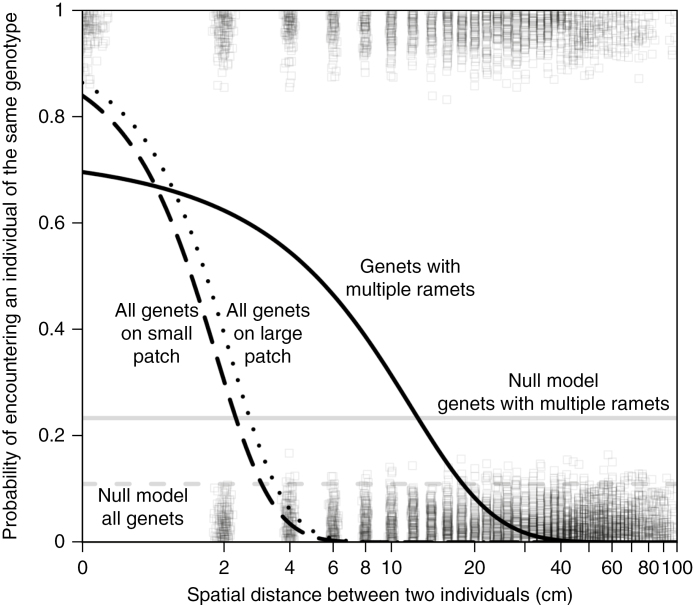Fig. 3.
The probability that two individuals (ramets) were the same genotype decreased as the distance between the two individuals increased. The patch size affected this relationship, where individuals on small patches (black, dashed line) were less likely to be near genetically identical individuals than individuals on large patches (black, dotted line). If individuals were randomly distributed within a patch (null model), the probabilty that any two individuals were the same genotype would be about 0.1 despite the distance between individuals. This result means that, across all individuals (ramets) and genotypes (genets), clumping of genotypes occurs and the spatial extent of the clumping of genets is smaller for small patches than for large patches. Because many genotypes are represented by multiple individuals within a patch, we can account for the genotypes that are found in only one individual and focus on the spatial clumping of a genotype. These individuals are not dispersed equally throughout the patch (null model is grey, solid line), but form clumps up to 40 cm wide (black, solid line). Boxes show whether the two individuals in each pairwise comparison are the same genotype (y = 1) or are not the same genotype (y = 0). We added jitter along both the x-axis and y-axis so that all the data points could be observed. Distance is graphed as log10(distance + 1) to allow us to plot a distance of 0 cm; the labels on the x-axis correct for the transformation.

